Abstract
OBJECTIVE/PURPOSE: To stimulate discussion within the research and policy community about the value of and issues surrounding different ways to describe access to care in a health system reconfigured by the growth of managed care, competition, and other marketplace changes. PRINCIPLE FINDINGS: The concept of access has evolved over time to address shifting health policy concerns like the growing interest in looking beyond utilization as a measure of access to a better consideration, too, of the effectiveness of services used as judged by costs and outcomes. Yet current frameworks used to look at access are person-based and do not capture the complexity of the healthcare system and the complex structures involved in managed care organizations that combine delivery and financing and vary substantially within and across markets. In addition, many at times competing or conflicting policy goals on access exist. There also is an increasingly diverse and widening set of uses that include benchmarking against national goals, measuring performance of accountable entities, and providing consumer information. CONCLUSIONS AND RECOMMENDATIONS: Traditional access frameworks are invaluable in encouraging focus on historical measures of access, like insurance coverage and other barriers to system entry. But much greater attention needs to be paid to adapting current access frameworks so that they also better support the ability to understand how processes inherent in diverse health delivery and financing arrangements influence access to services within a system and what this means for how well individuals negotiate healthcare systems and the effects on care outcomes. The increasing demands on access measures and the growing diversity of users also point to a need for collaboration to better pool insights, share experiences, and honestly confront trade-offs or disagreements to progress in addressing these issues.
Full text
PDF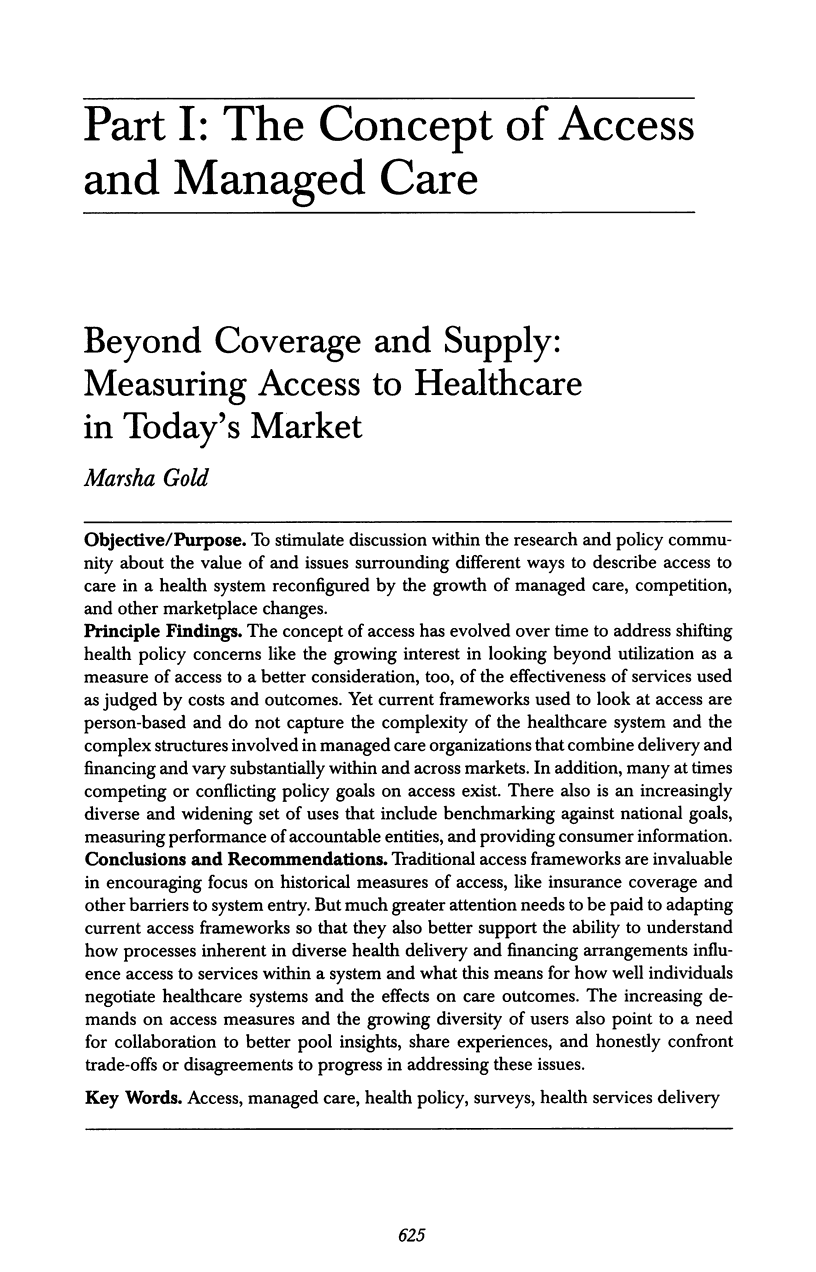
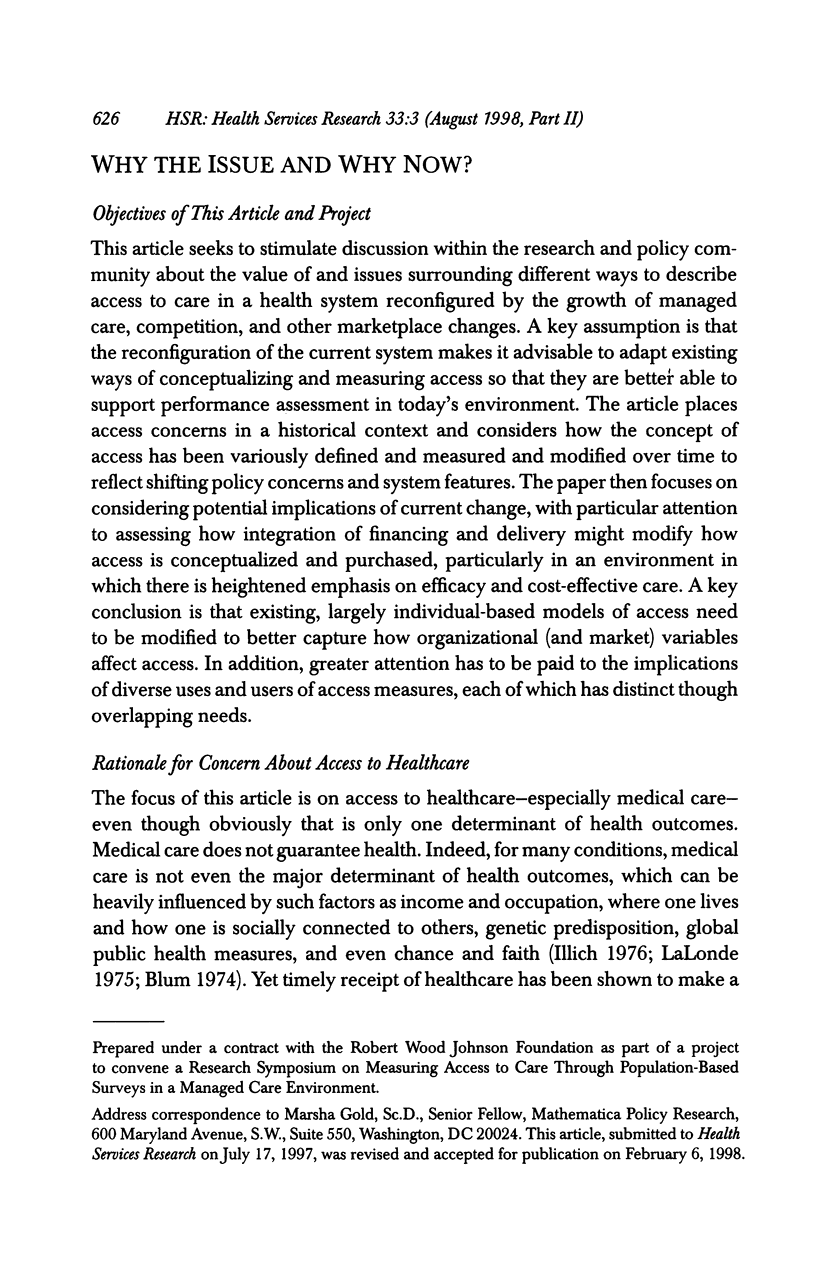



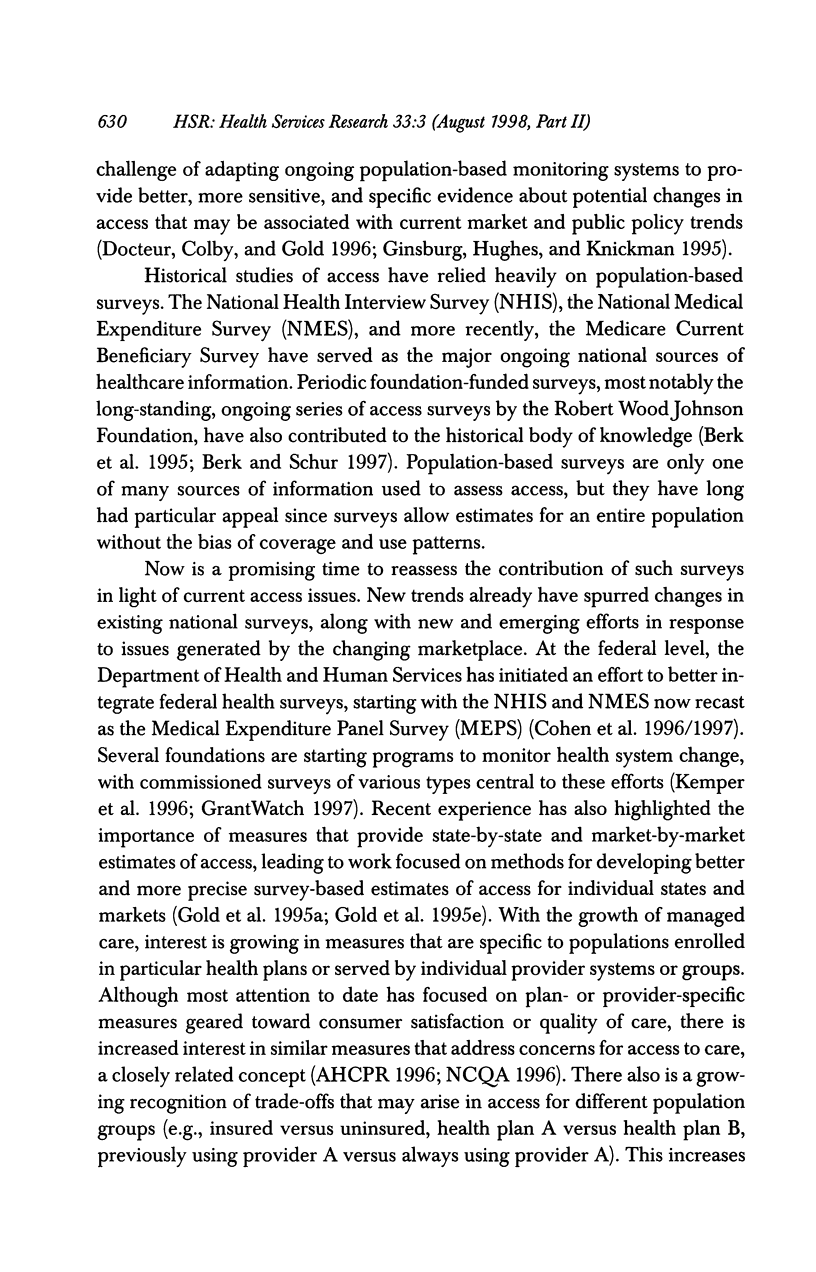
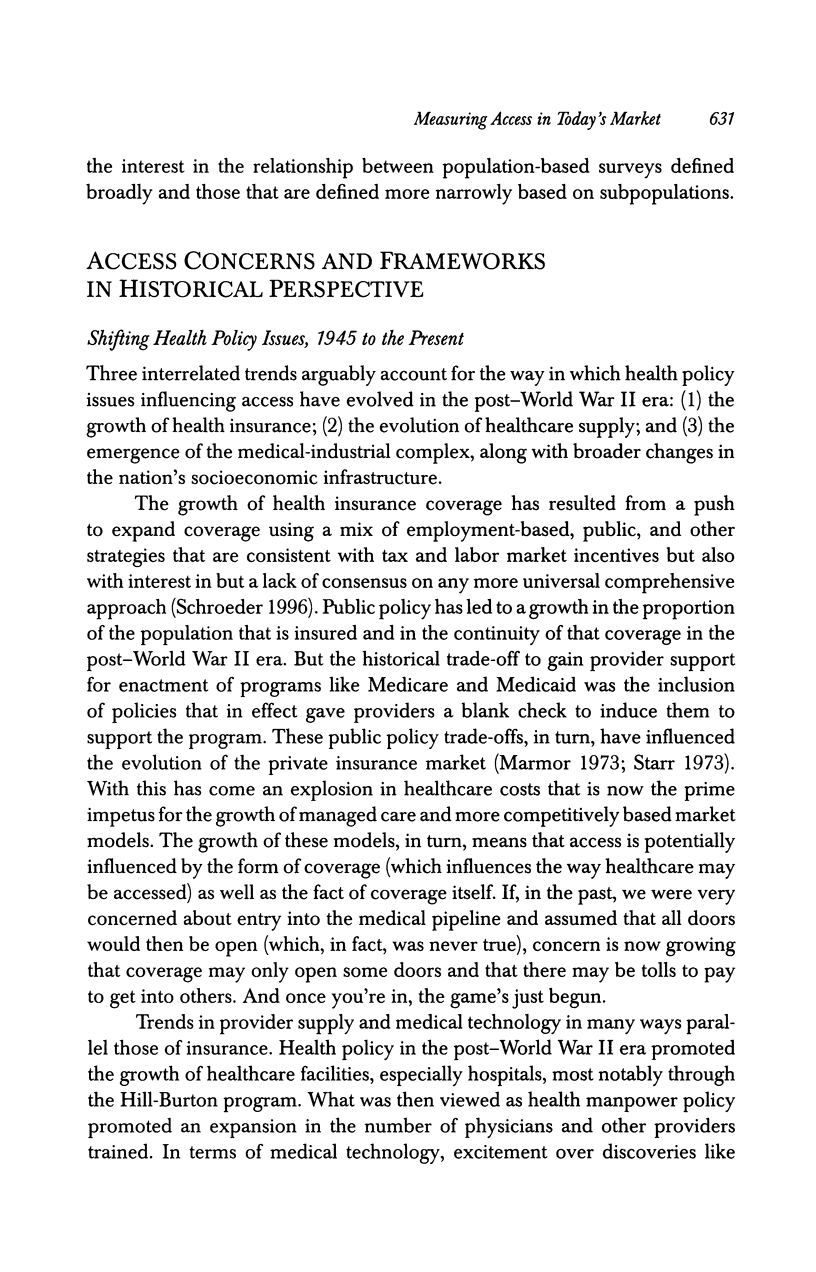
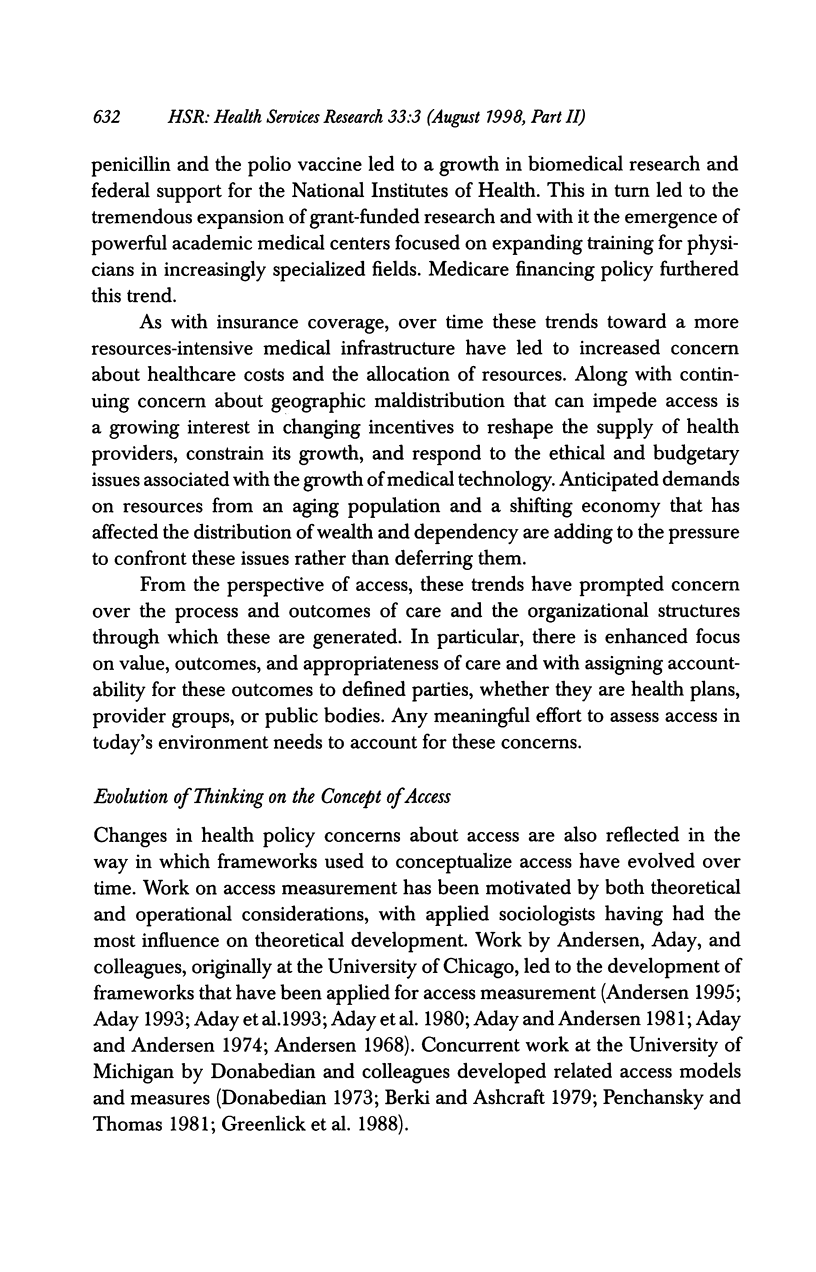


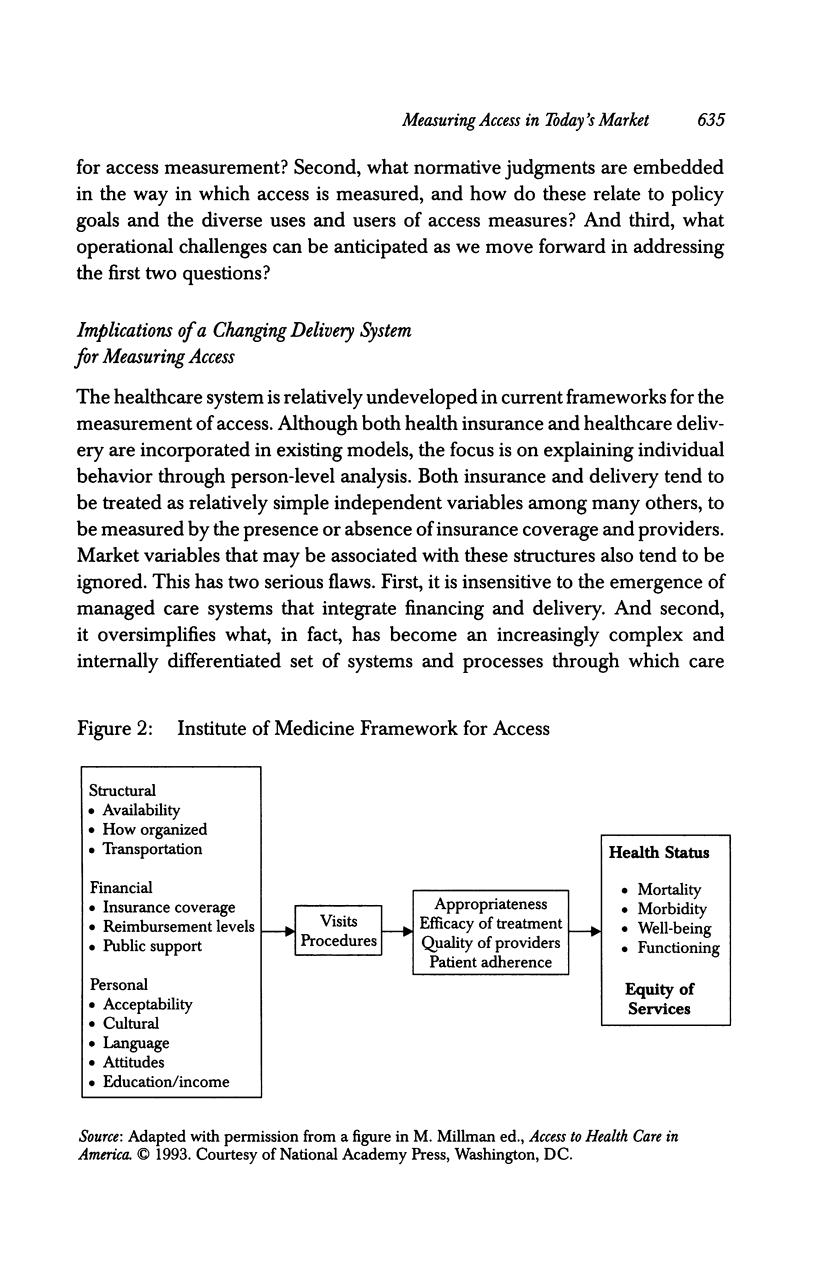


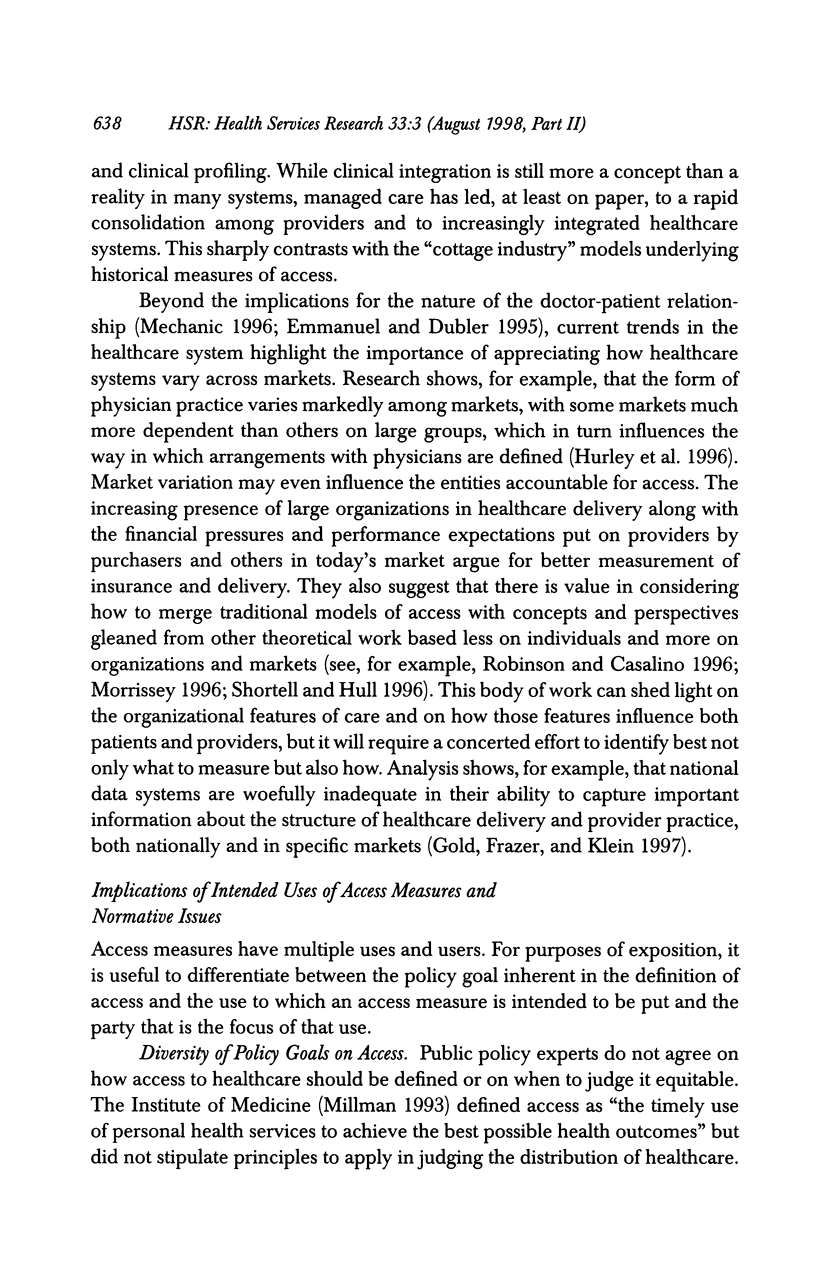

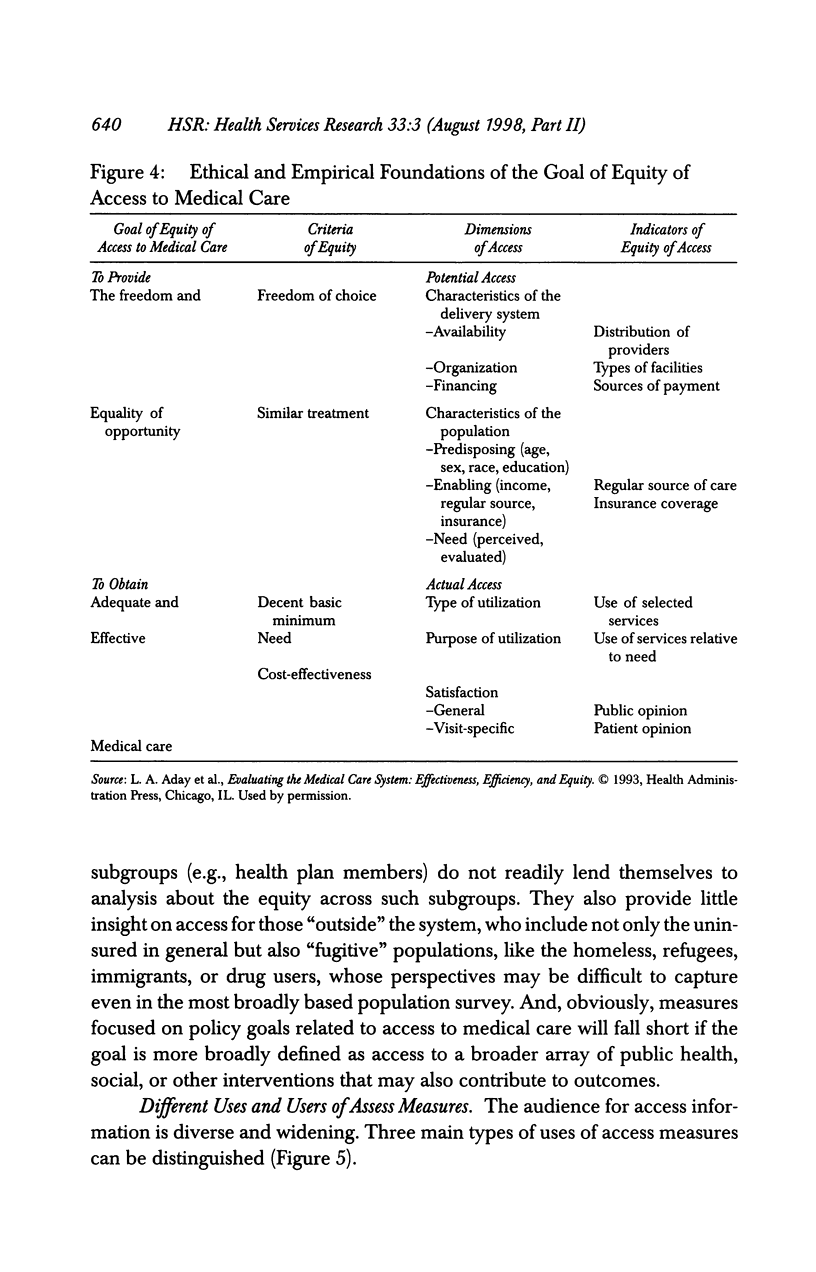

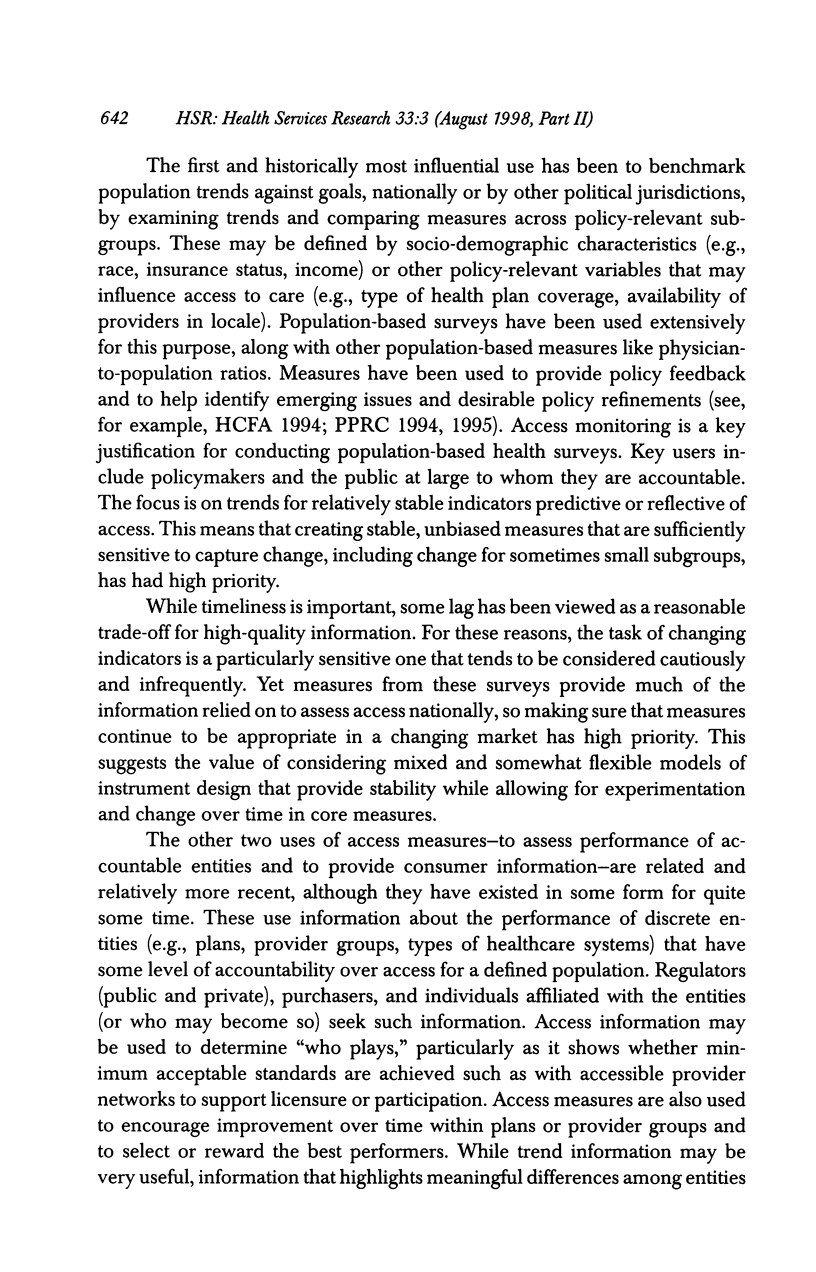
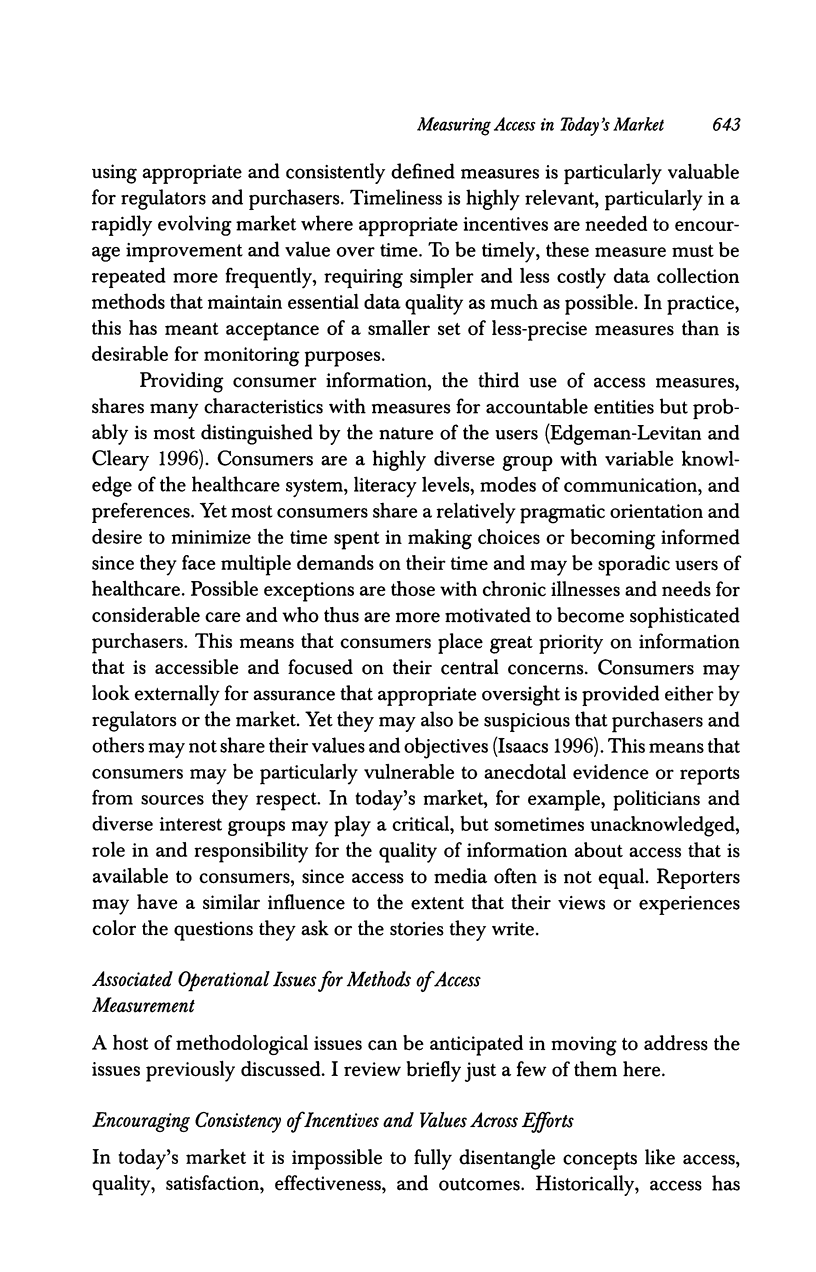

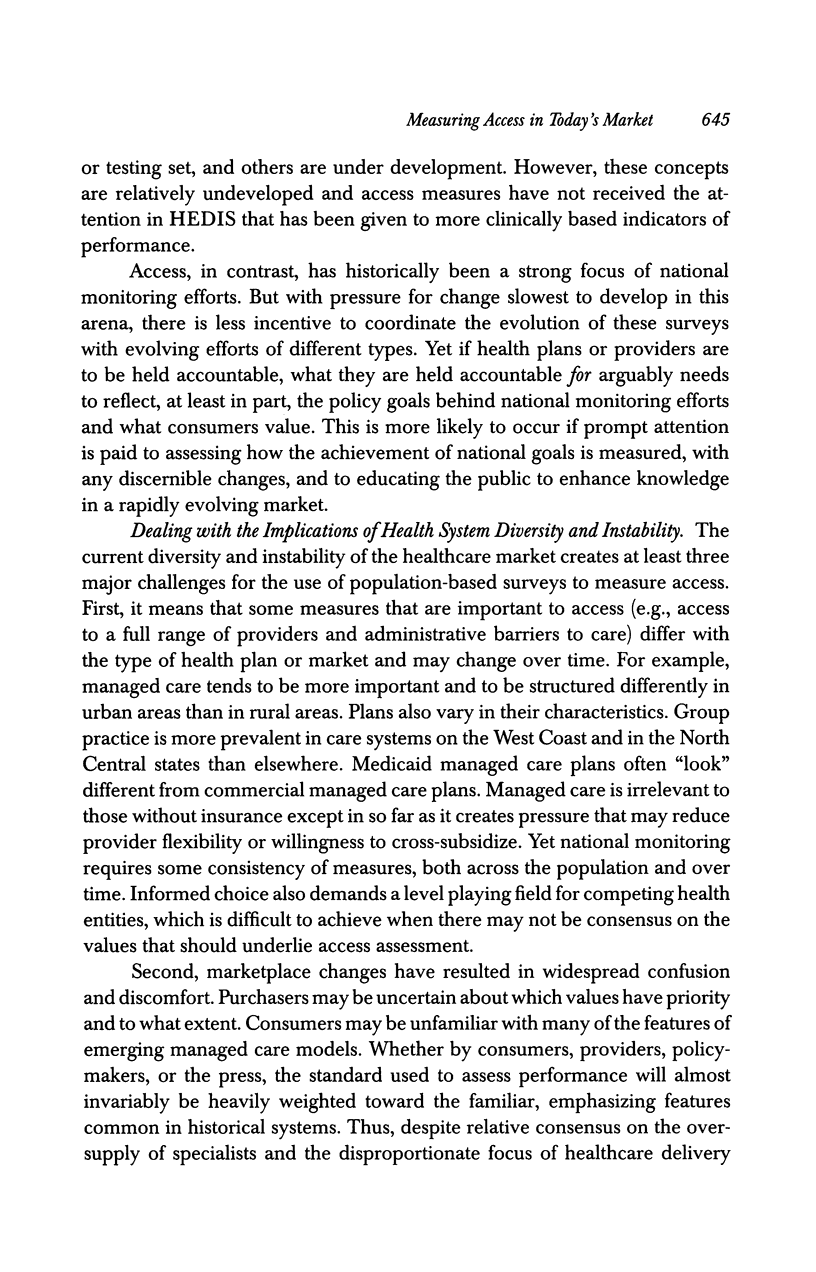
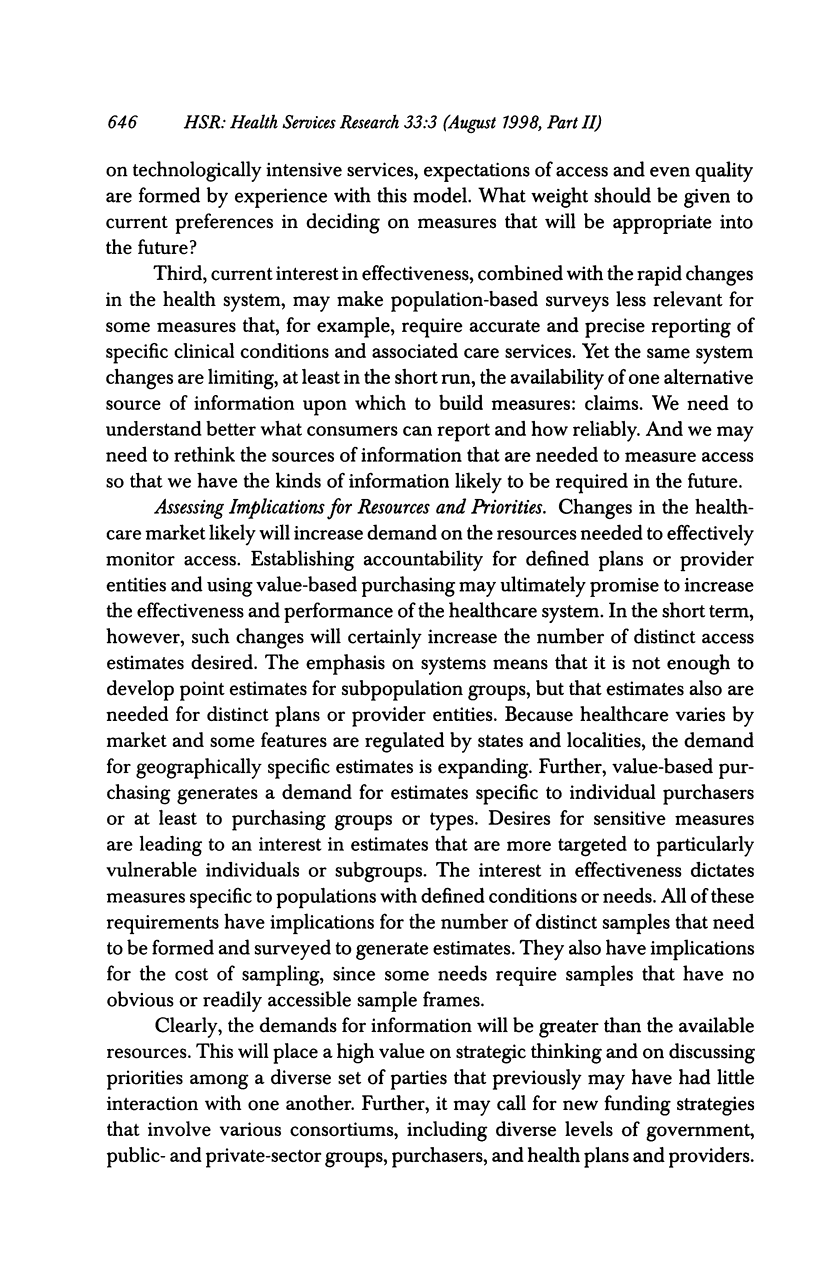


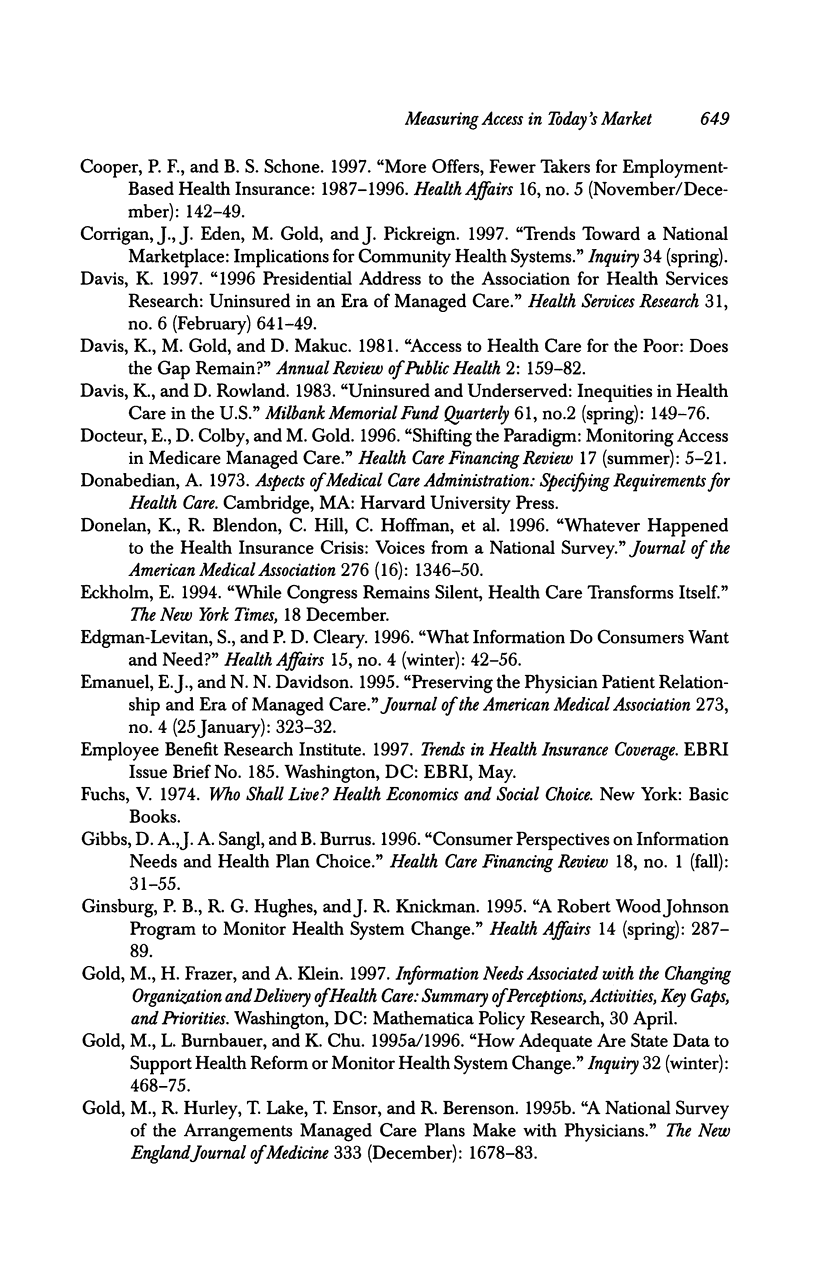

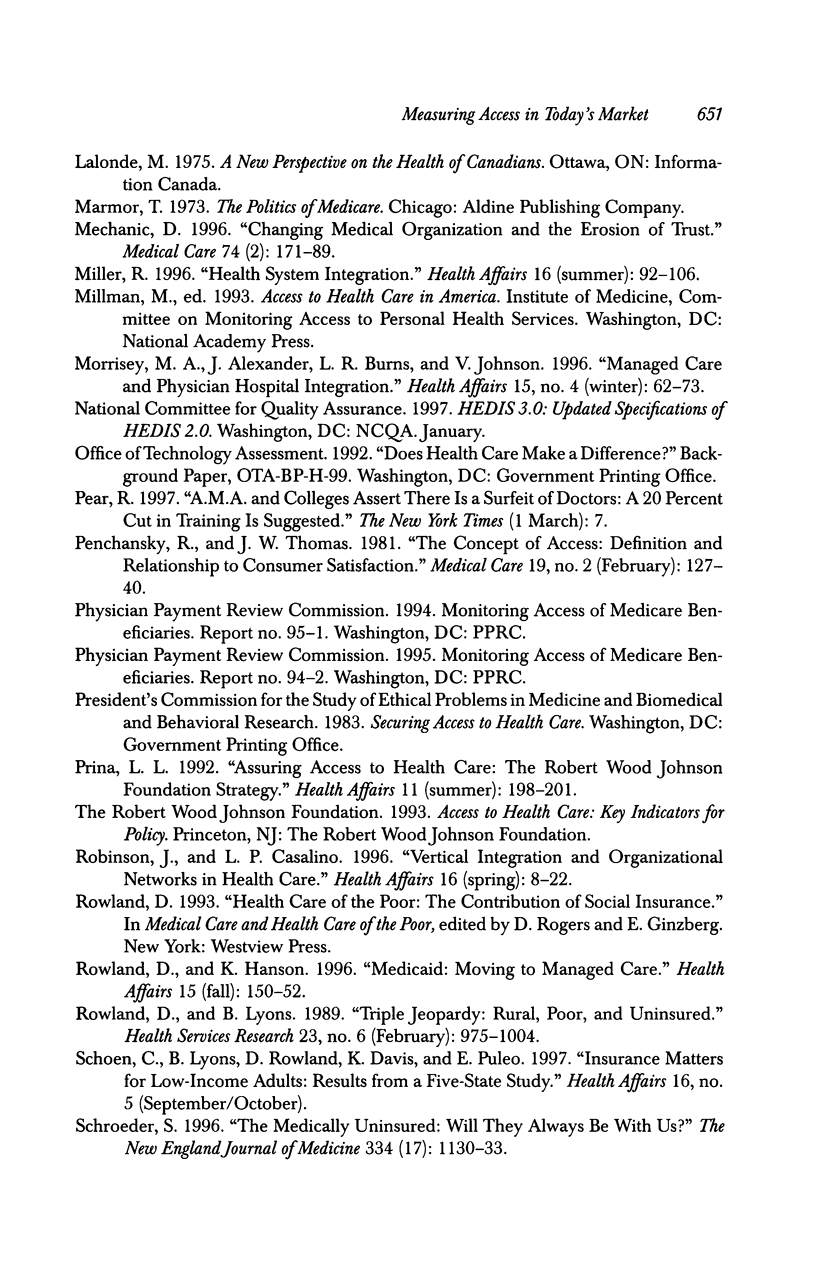
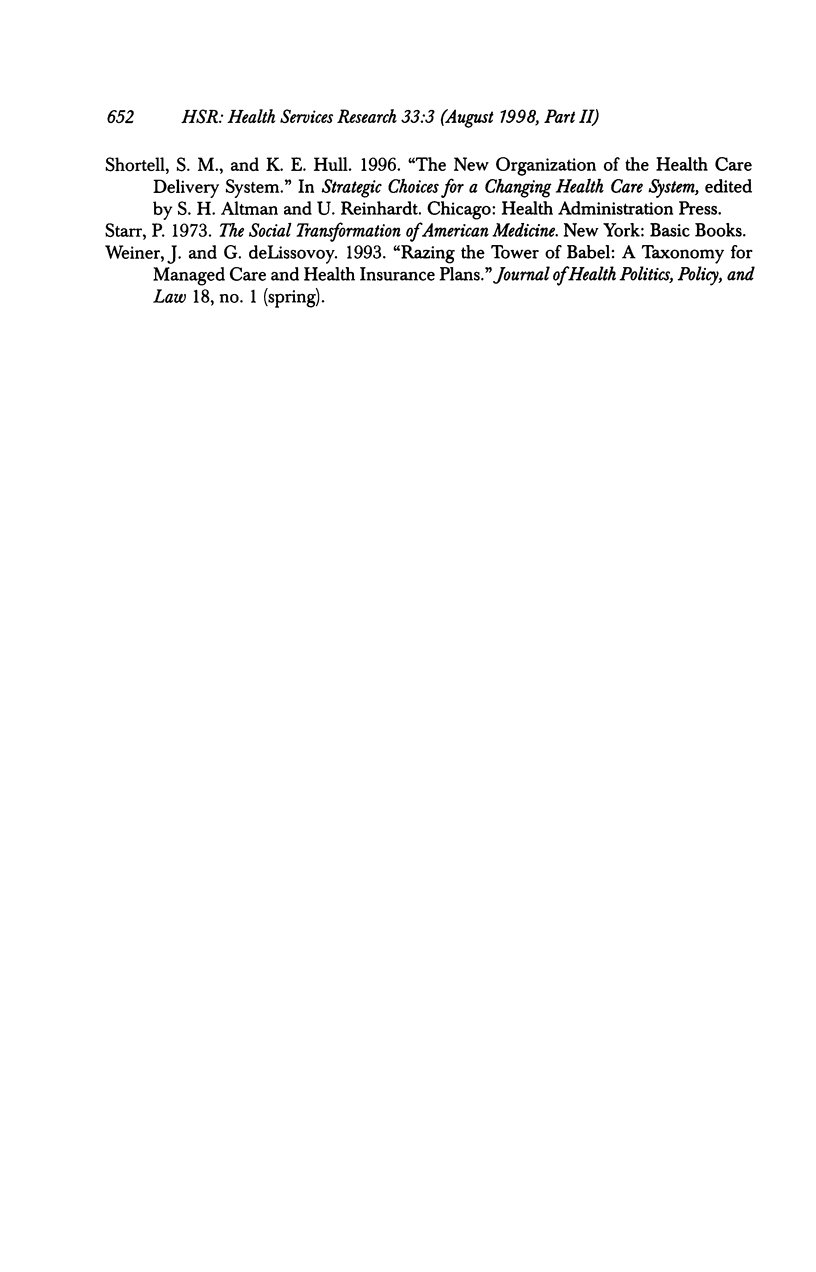
Selected References
These references are in PubMed. This may not be the complete list of references from this article.
- Aday Lu Ann, Andersen Ronald M. Equity of access to medical care: a conceptual and empirical overview. Med Care. 1981 Dec;19(12):4–27. [PubMed] [Google Scholar]
- Andersen R. M. Revisiting the behavioral model and access to medical care: does it matter? J Health Soc Behav. 1995 Mar;36(1):1–10. [PubMed] [Google Scholar]
- Andersen R., Aday L. A. Access to medical care in the U.S.: realized and potential. Med Care. 1978 Jul;16(7):533–546. doi: 10.1097/00005650-197807000-00001. [DOI] [PubMed] [Google Scholar]
- Berk M. L., Schur C. L., Cantor J. C. Ability to obtain health care: recent estimates from the Robert Wood Johnson Foundation National Access to Care Survey. Health Aff (Millwood) 1995 Fall;14(3):139–146. doi: 10.1377/hlthaff.14.3.139. [DOI] [PubMed] [Google Scholar]
- Berki S. E., Ashcraft M. L. On the analysis of ambulatory utilization: an investigation of the roles of need, access and price as predictors of illness and preventive visits. Med Care. 1979 Dec;17(12):1163–1181. [PubMed] [Google Scholar]
- Cohen J. W., Monheit A. C., Beauregard K. M., Cohen S. B., Lefkowitz D. C., Potter D. E., Sommers J. P., Taylor A. K., Arnett R. H., 3rd The Medical Expenditure Panel Survey: a national health information resource. Inquiry. 1996;33(4):373–389. [PubMed] [Google Scholar]
- Cooper P. F., Schone B. S. More offers, fewer takers for employment-based health insurance: 1987 and 1996. Health Aff (Millwood) 1997 Nov-Dec;16(6):142–149. doi: 10.1377/hlthaff.16.6.142. [DOI] [PubMed] [Google Scholar]
- Davis K., Gold M., Makuc D. Access to health care for the poor: does the gap remain? Annu Rev Public Health. 1981;2:159–182. doi: 10.1146/annurev.pu.02.050181.001111. [DOI] [PubMed] [Google Scholar]
- Davis K., Rowland D. Uninsured and underserved: inequities in health care in the United States. Milbank Mem Fund Q Health Soc. 1983 Spring;61(2):149–176. [PubMed] [Google Scholar]
- Davis K. Uninsured in an era of managed care. Health Serv Res. 1997 Feb;31(6):641–649. [PMC free article] [PubMed] [Google Scholar]
- Docteur E. R., Colby D. C., Gold M. Shifting the paradigm: monitoring access in Medicare managed care. Health Care Financ Rev. 1996 Summer;17(4):5–21. [PMC free article] [PubMed] [Google Scholar]
- Donelan K., Blendon R. J., Hill C. A., Hoffman C., Rowland D., Frankel M., Altman D. Whatever happened to the health insurance crisis in the United States? Voices from a national survey. JAMA. 1996 Oct 23;276(16):1346–1350. [PubMed] [Google Scholar]
- Edgman-Levitan S., Cleary P. D. What information do consumers want and need? Health Aff (Millwood) 1996 Winter;15(4):42–56. doi: 10.1377/hlthaff.15.4.42. [DOI] [PubMed] [Google Scholar]
- Emanuel E. J., Dubler N. N. Preserving the physician-patient relationship in the era of managed care. JAMA. 1995 Jan 25;273(4):323–329. [PubMed] [Google Scholar]
- Ginsburg P. B., Hughes R. G., Knickman J. R. A Robert Wood Johnson program to monitor health system change. Health Aff (Millwood) 1995 Spring;14(1):287–289. doi: 10.1377/hlthaff.14.1.287. [DOI] [PubMed] [Google Scholar]
- Gold M. R., Hurley R., Lake T., Ensor T., Berenson R. A national survey of the arrangements managed-care plans make with physicians. N Engl J Med. 1995 Dec 21;333(25):1678–1683. doi: 10.1056/NEJM199512213332505. [DOI] [PubMed] [Google Scholar]
- Gold M., Burnbauer L., Chu K. How adequate are state data to support health reform or monitor health system change? Inquiry. 1995;32(4):468–475. [PubMed] [Google Scholar]
- Hibbard J. H., Jewett J. J. What type of quality information do consumers want in a health care report card? Med Care Res Rev. 1996 Mar;53(1):28–47. doi: 10.1177/107755879605300102. [DOI] [PubMed] [Google Scholar]
- Isaacs S. L. Consumer's information needs: results of a national survey. Health Aff (Millwood) 1996 Winter;15(4):31–41. doi: 10.1377/hlthaff.15.4.31. [DOI] [PubMed] [Google Scholar]
- Jensen G. A., Morrisey M. A., Gaffney S., Liston D. K. The new dominance of managed care: insurance trends in the 1990s. Health Aff (Millwood) 1997 Jan-Feb;16(1):125–136. doi: 10.1377/hlthaff.16.1.125. [DOI] [PubMed] [Google Scholar]
- Kemper P., Blumenthal D., Corrigan J. M., Cunningham P. J., Felt S. M., Grossman J. M., Kohn L. T., Metcalf C. E., St Peter R. F., Strouse R. C. The design of the community tracking study: a longitudinal study of health system change and its effects on people. Inquiry. 1996 Summer;33(2):195–206. [PubMed] [Google Scholar]
- Kleinman J. C., Gold M., Makuc D. Use of ambulatory medical care by the poor: another look at equity. Med Care. 1981 Oct;19(10):1011–1029. doi: 10.1097/00005650-198110000-00004. [DOI] [PubMed] [Google Scholar]
- Mechanic D. Changing medical organization and the erosion of trust. Milbank Q. 1996;74(2):171–189. [PubMed] [Google Scholar]
- Miller R. H. Health system integration: a means to an end. Health Aff (Millwood) 1996 Summer;15(2):92–106. doi: 10.1377/hlthaff.15.2.92. [DOI] [PubMed] [Google Scholar]
- Morrisey M. A., Alexander J., Burns L. R., Johnson V. Managed care and physician/hospital integration. Health Aff (Millwood) 1996 Winter;15(4):62–73. doi: 10.1377/hlthaff.15.4.62. [DOI] [PubMed] [Google Scholar]
- Penchansky R., Thomas J. W. The concept of access: definition and relationship to consumer satisfaction. Med Care. 1981 Feb;19(2):127–140. doi: 10.1097/00005650-198102000-00001. [DOI] [PubMed] [Google Scholar]
- Prina L. L. Assuring access to health care: the Robert Wood Johnson Foundation strategy. Health Aff (Millwood) 1992 Summer;11(2):198–201. doi: 10.1377/hlthaff.11.2.198. [DOI] [PubMed] [Google Scholar]
- Robinson J. C., Casalino L. P. Vertical integration and organizational networks in health care. Health Aff (Millwood) 1996 Spring;15(1):7–22. doi: 10.1377/hlthaff.15.1.7. [DOI] [PubMed] [Google Scholar]
- Rowland D., Hanson K. Medicaid: moving to managed care. Health Aff (Millwood) 1996 Fall;15(3):150–152. doi: 10.1377/hlthaff.15.3.150. [DOI] [PubMed] [Google Scholar]
- Rowland D., Lyons B. Triple jeopardy: rural, poor, and uninsured. Health Serv Res. 1989 Feb;23(6):975–1004. [PMC free article] [PubMed] [Google Scholar]
- Schroeder S. A. The medically uninsured--will they always be with us? N Engl J Med. 1996 Apr 25;334(17):1130–1133. doi: 10.1056/NEJM199604253341713. [DOI] [PubMed] [Google Scholar]


